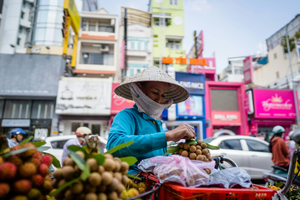Local Language, Local Life: The Role of Vietnamese in Understanding Saigon Culture

Imagine walking the vibrant streets of Saigon, where the sounds of bustling motorbikes blend with snippets of animated Vietnamese conversation. Language is often seen as a simple means of communication, but in the heart of Vietnam's largest city, it is so much more. At its core, Vietnamese is the key to unlocking an enriched understanding of Saigon's culture, brimming with history, artistry, and deep-seated traditions. For collectors and antique enthusiasts, delving into this linguistic journey not only uncovers Saigon's essence but also adds color and context to their invaluable treasures.

Saigon: A Melting Pot of History and Heritage
Saigon, officially known as Ho Chi Minh City, is a dynamic tapestry of influences that have woven together over centuries. From its origins as a Khmer trading post to its colonial French reimagining, each era of Saigon's history has left an indelible mark on its culture. The Vietnamese language, with its richness and complexity, embodies this cultural plurality. By understanding Vietnamese, one can better appreciate the nuanced evolution of the city's customs, architecture, and antiques that are emblematic of Saigon's identity.
The Lyrical Heart of Vietnamese
At first glance, Vietnamese may appear daunting with its six tones and myriad of diacritics. However, it is precisely these intricacies that reflect the lyrical quality of the language. Influenced by centuries of Chinese rule, the Vietnamese lexicon is peppered with ancient Han characters while also bearing Sanskrit, French, and even American elements due to trade and conquest.
For collectors, this linguistic diversity is a goldmine. Old inscriptions on vintage furniture, ancestral altars, and silk tunic embroideries reveal much when translated. The language offers whispers of the past, giving profound context to the relics that draw so many to Saigon's antique markets.

Conversing with Culture
Beyond artifacts, the language serves as a living bridge to understanding local customs and traditions. The Vietnamese people cherish myriad festivals, each characterized by its own set of rituals and rich, descriptive vocabulary. For instance, Tet Nguyen Dan, the Vietnamese Lunar New Year, bursts with symbolism and meaning that is most fully realized when experienced through its native language.
Moreover, engaging with locals in their mother tongue fosters authentic connections, providing first-hand insight into Saigon's daily rhythms, from the poetic recitals hosted in cafés to the spirited discussions at bustling street markets.
Enriching Antique Enthusiasts' Experience
Moreover, observing local artisans at work, communicating in their native language, unveils techniques passed down through generations, granting collectors an intimate peek into a world where tradition and craftsmanship converge.

Conclusion: Embrace the Dialogue
Saigon's culture is a splendid mosaic waiting to be appreciated, and the Vietnamese language is your guide. Embracing this linguistic endeavor not only enhances the journey of discovering Saigon but also elevates the experience of possessing its historical relics. Language, after all, is the heartbeat of a culture. By learning Vietnamese, collectors and antique aficionados find themselves better equipped to cherish, preserve, and appropriately honor the vibrant spirit of Saigon. As you immerse yourself in this city, remember: every phrase learned is a step deeper into understanding the life, legacy, and living culture of this captivating metropolis.







